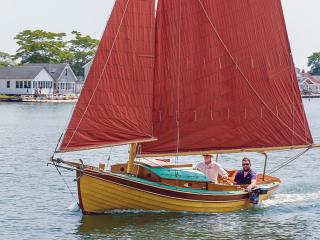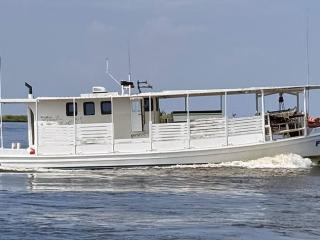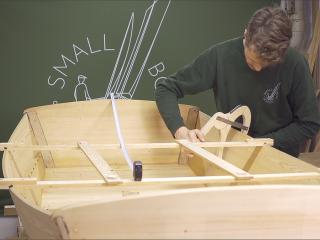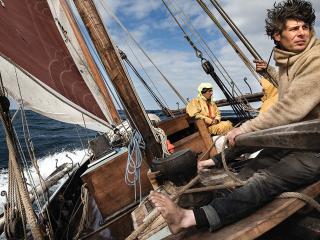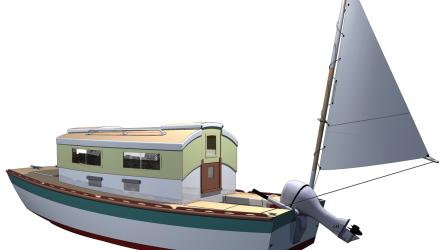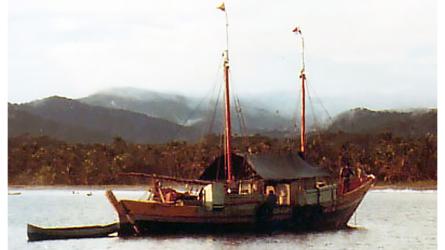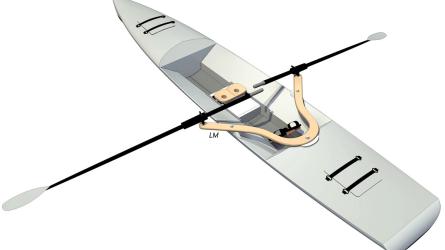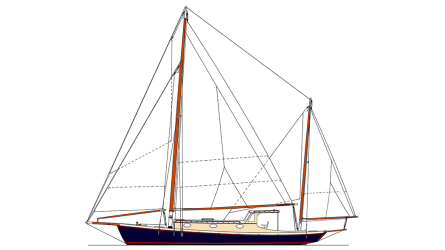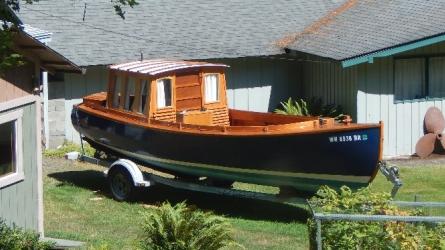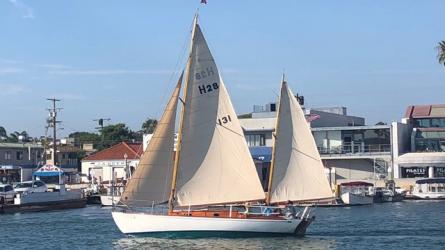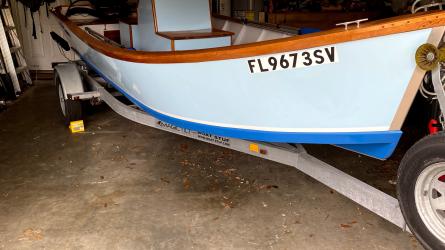March / April 2025
A Lawley Tender
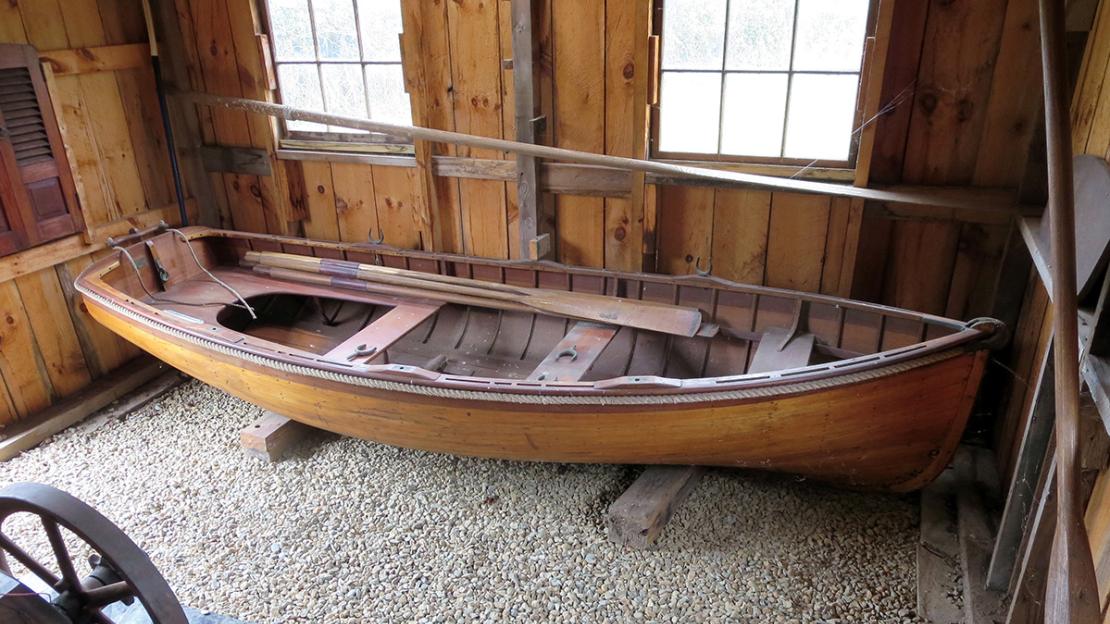
The Lawley tender has a fine entrance but full sections well forward of amidships that extend to the after thwart, providing buoyancy for five or six adults. With her straight run to the transom, she will carry well between strokes, whether loaded or not.
Many of us who love small boats hope someday to come upon a real gem, stored and all but forgotten in the loft of a barn or shed. This happened to me, although I was slow to realize what I was looking at. I had known where this boat was stored and several times had climbed a rickety ladder to give her a quick look. It was only when she was brought out for display that I realized how fine she was. I have built small boats all my life and have been proud of my work, but the craftsmanship built into this boat is truly humbling.
She had been stored for well over 50 years in a loft that was freezing in winter and sweltering in summer, when the sun beat on a black, tar-shingled roof only 2' above her. She must have been exposed many times to temperatures well over 100 degrees. Despite this, the planking, laid tight with no caulking, showed no open seams.
This tender is now a century old, having been built in 1925 by George F. Lawley & Son in Neponset, Massachusetts, just south of Boston. That company’s founder, George Lawley, had emigrated from Scotland and worked from 1852 to 1856 for Donald McKay, the renowned designer of extreme clipper ships. In 1856, Lawley opened his first boatyard in Scituate, Massachusetts. The yard moved to City Point in South Boston in 1874. In 1909, it moved again, this time to Neponset, where it continued in business until 1946. Lawley was a premier builder of yachts and small boats at the time the yard built this boat as a tender for the 55' powerboat SAHARA, designed by William Hand Jr.
The boat is 12' 2" long with a beam of 4' 2". Her shape is lovely, but no more so than many other pulling boats. Her layout is conventional for the type. Her interior shows three thwarts for rowing; they also provide critical structural support for the hull. Her U-shaped sternsheets are for passengers, one of whom will steer with lines coming from the rudder yoke, which also allow a solo passenger to steer while sitting amidships to keep the boat level.
To read the rest of this article:
Click the button below to log into your Digital Issue Access account.
No digital access? Subscribe or upgrade to a WoodenBoat Digital Subscription and finish reading this article as well as every article we have published for the past 50-years.
ACCESS TO EXPERIENCE
2-for-1 Print & Digital Subscription Offer
For this holiday season, WoodenBoat is offering our best buy one, get one deal ever. Subscribe with a print & digital subscription for $42.95, and we’ll give you a FREE GIFT SUBSCRIPTION to share with someone special.
1 YEAR SUBSCRIPTION (6 ISSUES)
PLUS ACCESS TO MORE THAN 300 DIGITAL BACK ISSUES
PRINT+DIGITAL $42.95
Subscribe
To read articles from previous issues, you can purchase the issue at The WoodenBoat Store link below.
 Purchase this issue from
Purchase this issue from
